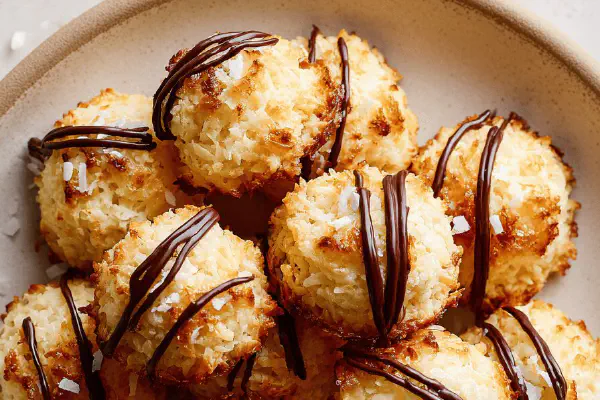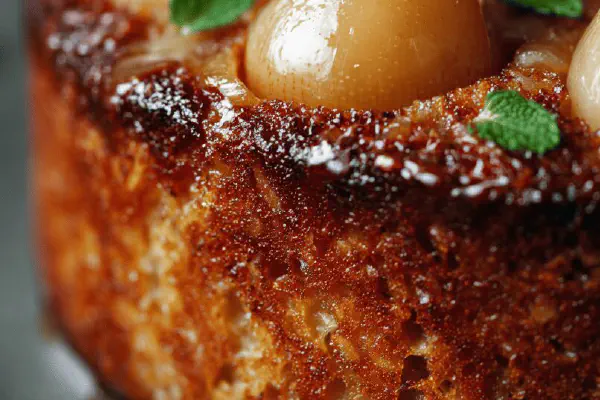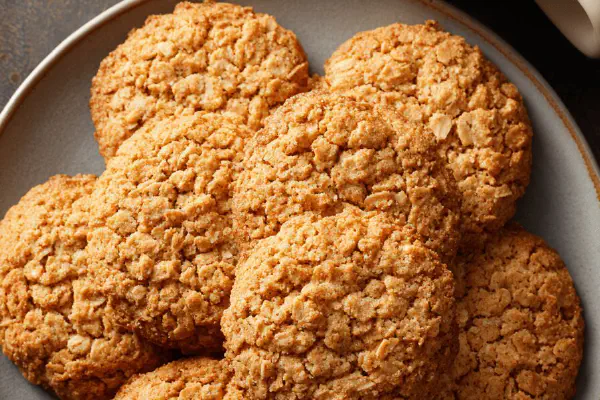Vanilla Pan Cake Twist

By Emma
Certified Culinary Professional
Ingredients
- 140 ml (9 tbsp plus 1 tsp) unbleached all-purpose flour
- 6 ml (1 1/4 tsp) baking powder
- 85 ml (5 1/2 tbsp) coconut oil, softened
- 105 ml (7 tbsp) granulated sugar
- 1 large egg
- 2,5 ml (1/2 tsp) pure vanilla extract
- 70 ml (just under 1/3 cup) almond milk
About the ingredients
Method
- Preheat oven to 175C (350F). Position the rack center. Butter and flour a heavy 18cm (7-inch) oven-safe pan with at least 2L capacity. I prefer cast iron or enamel for even heat; barely any sticking here.
- Whisk flour and baking powder thoroughly in medium bowl. Sift if clumpy; no one wants dense spots. Set aside. This dry mix ensures the cake rises evenly without bitter aftertaste from too much baking powder.
- Using electric mixer, cream softened coconut oil and sugar until light and creamy. I usually do this 3 minutes medium speed. You should hear the sugar crackle softly between beaters. Adds volume.
- Add egg and vanilla, beat just until combined. No overmix; egg whites can toughen cake if whipped too long.
- Alternate adding dry mix and almond milk in batches to the wet mix. Start and end with dry. Fold gently to avoid gluten development—cake stays tender but structured.
- Pour batter into prepared pan. Tap pan on counter to release air bubbles. Makes the crumb finer, no holes. The batter looks glossy, thick but pourable.
- Bake 25-35 minutes. At 25, start needle test: insert toothpick center; clean or with a few moist crumbs, perfect. If batter sticks, add 5 more minutes. Cake edges will pull away from pan slightly and top should be golden, not pale.
- Remove pan from oven. Let sit 10 minutes; edges set but cake still warm.
- Invert cake onto wire rack, leaving pan atop if possible to keep warmth and humidity harnessed. This cool-down traps moisture, keeping crumb soft. It took trial and error for me to not break the cake here; wiping pan rim and loosening sides with a thin paring knife first helps immensely.
- Cool completely before slicing. Eager hands risk tearing.
- Serve plain, dust with powdered sugar, or add fresh berries. Taste shows subtle vanilla, faint coconut warmth, and delicate crumb from almond milk substitution.
Cooking tips
Chef's notes
- 💡 Room temperature ingredients crucial here; cold coconut oil or almond milk messes with batter volume. Beat softened coconut oil and sugar until light, hear sugar crackle low hum between beaters. Short on creaming? Gritty texture, dense crumb follows. Fold dry mix and almond milk alternating batches. Start and end dry. Avoid gluten overdevelopment; rough mixing ruins tender crumb structure.
- 💡 Pan choice makes or breaks bake. Heavy 18cm cast iron or enamel pans distribute heat evenly to avoid burnt edges. Nonstick pans often shrink or stick post-bake. Grease and flour well; if flour clumps, pat surface lightly or oil flour mix. Rigid pan surfaces ease inversion, but flick pan edges with thin knife before flipping. Rock gently if stuck to prevent crumb break-off.
- 💡 Timing varies oven to oven. Watch golden top, edges start pulling away, not just timer. Toothpick test key: moist crumbs stuck means done; sticky batter means longer bake. Start testing at 25 min, add 5 min if needed. Overbake = rubbery or dry cake. Smell cues: faint caramelizing scents hit around 20 minutes; give hints beyond visual.
- 💡 Cooling upside down traps steam; essential for moist soft crumb. Let cake sit 10 min in pan post-bake, then invert on wire rack immediately. Avoid leaving cake in pan too long or condensation sogs crumb. Use towel grip for flipping and loosen sides with thin knife. Trial necessary to avoid breakage here. Cake warmth helps moisture retention during cooling.
- 💡 Substitution notes scattered but critical: coconut oil melts lower temp than butter, yields softer crumb. Almond milk trades dairy richness for nutty undertone, safe for nut allergies but oat milk can replace for similar texture. Vanilla extract quality defines aroma intensity. Powdered sugar adds contrast but optional. Fresh baking powder vital; stale powder causes dense crumb, adjust ingredient freshness always.
Common questions
How to know when cake is done?
Toothpick test best. Insert center, if moist crumbs cling but no wet batter, bake done. Edges pulling from pan means nearly there. Golden top signals ready. Smell changes too, caramelizing hints around 20 mins. Oven temps vary, so rely on cues not just clock.
What if cake sticks during inversion?
Use thin knife to loosen edges gently. Don’t force flip; rock pan slowly. Grease and flour pan thoroughly before pouring batter. Nonstick pans complicate removal; better heavy cast iron or enamel. Cool cake 10 min in pan, warm crumb easier unmolding. Broken cake means too much rushing or insufficient fat creaming.
Can I swap coconut oil or almond milk?
Butter possible but softer moisture lost; soften well before creaming. Almond milk best at room temp. Oat milk alternative with subtle taste shift; dairy milk changes richness. Coconut oil contributes subtle tropical note textures absent in butter. Adjust expectancies on crumb and aroma based on swaps.
How to store leftovers?
Wrap airtight to keep moistness up to 2 days. Refrigerate if longer but risk drying. Rewarm briefly before serving to revive aroma and soften crumb. Avoid leaving cake uncovered or frozen, crumb texture deteriorates quickly. Cool completely before storage to prevent sogginess.



